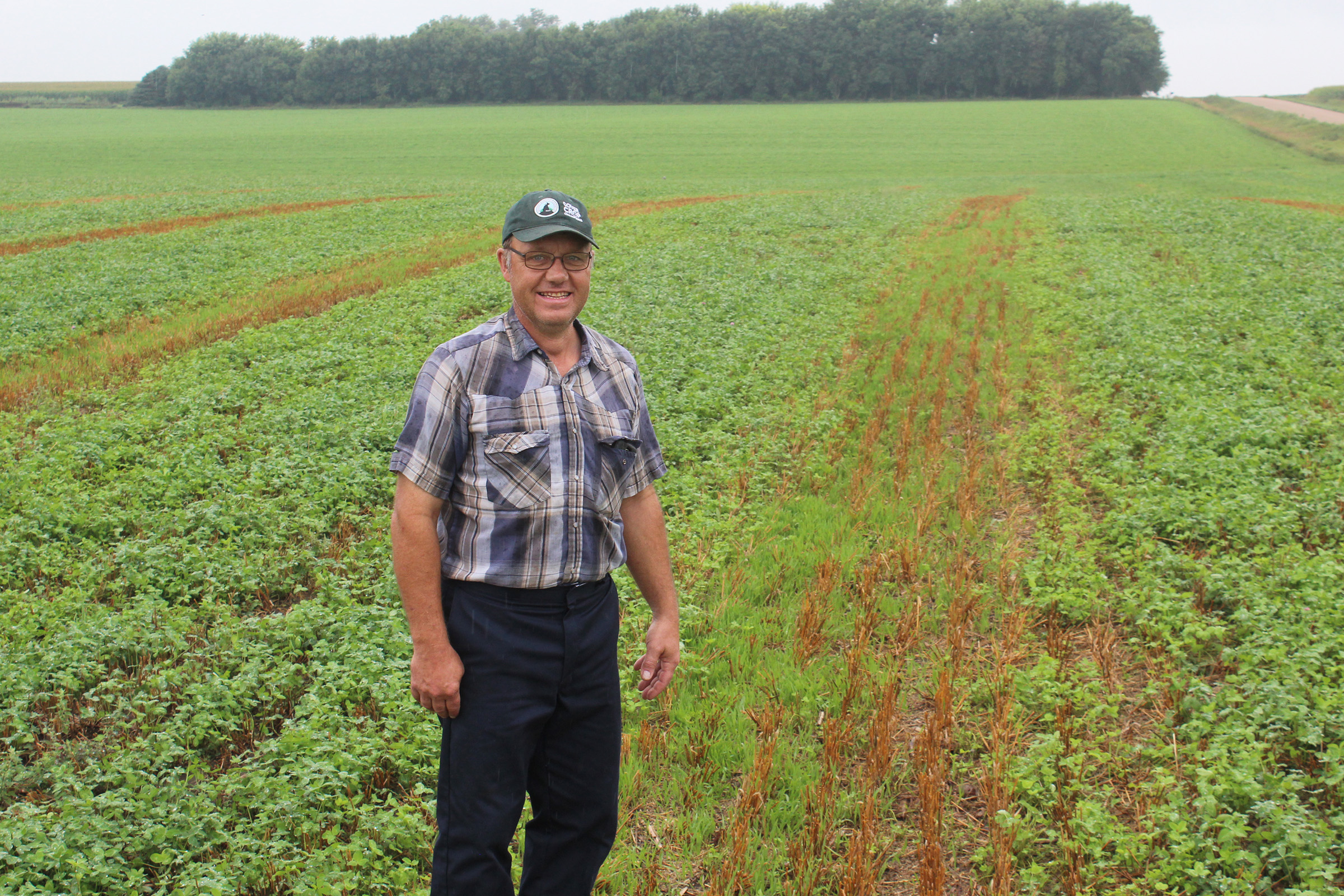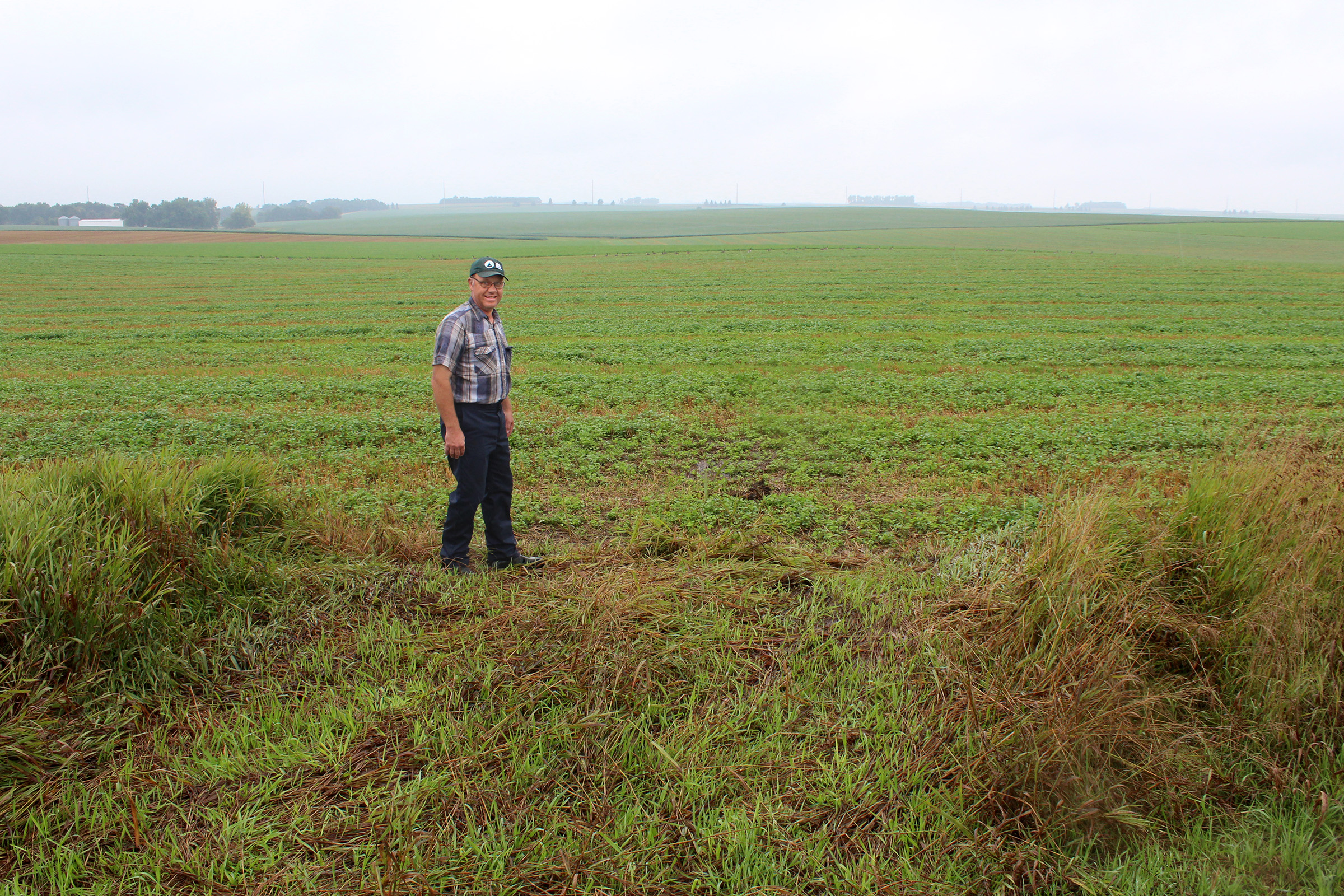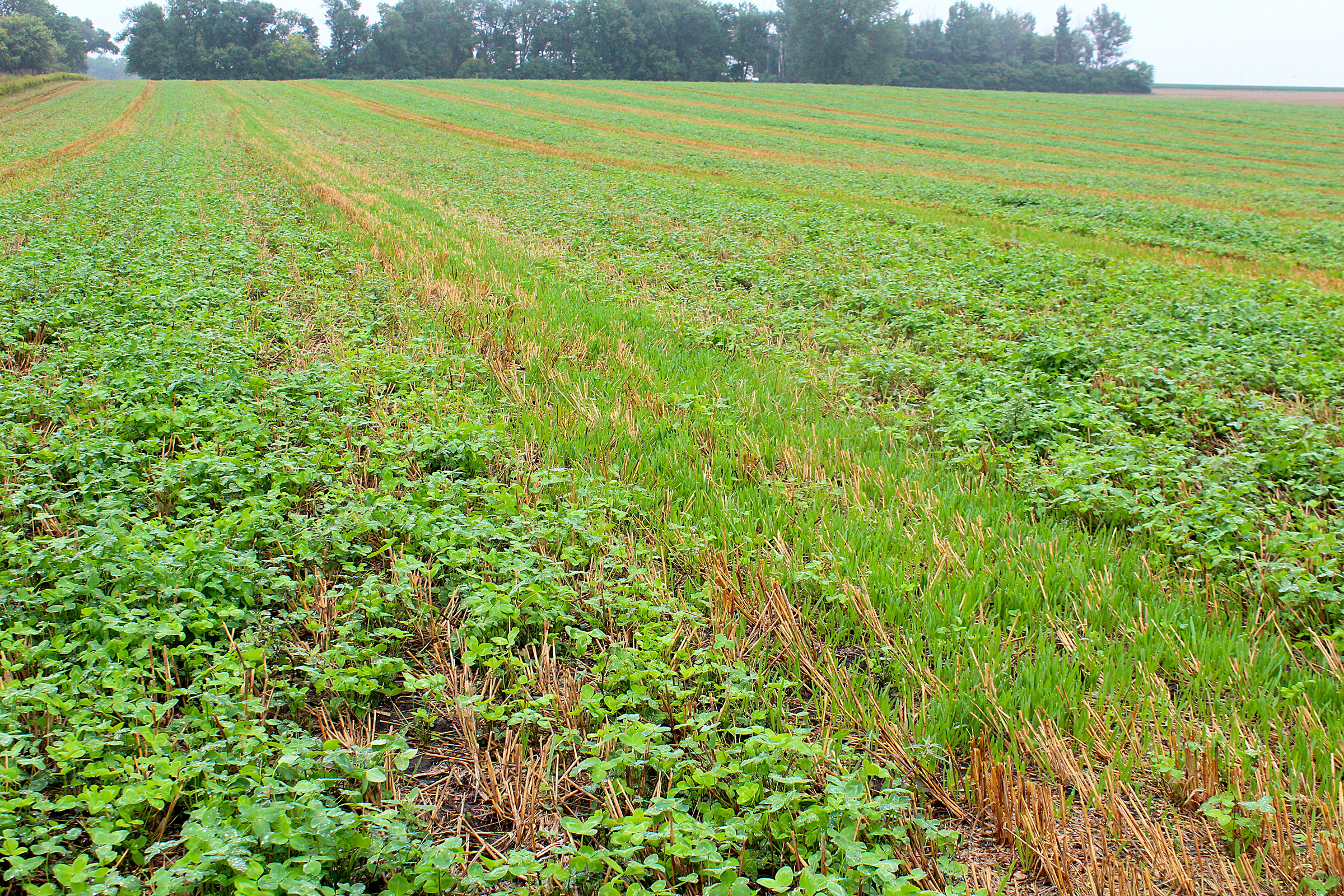 ,
,  ,
, 
To prevent erosion and boost soil health, many Rock County corn and soybean farmers are planting cover crops between growing seasons.
The added bonus is higher yields and lower input costs, according to Luverne farmer Tom Fick.
“It’s something anybody can do,” he said. “You just need to figure out what your goals are. … Do you want it for extra livestock feed? Do you want the extra nitrogen? Do you want it for soil erosion?”
Fick is hosting a cover crop information day at his farm west of Luverne on Sept. 5, and he said he hopes the message reaches the right people.
“There’s so much information about cover crops in the media, but what works in Rock County may not be the same as everywhere else,” he said.
Field Day is Sept. 5 at Tom Fick farm
The Cover Crop and Soil Field Day will be from 9:30 a.m. to 3 p.m. at Fick’s home at 1157 110th Ave., Luverne, with morning presentations and afternoon field demonstrations.
Fick and Rock County farmers Terry Aukes and Brent Fluit are a team of local producers documenting their cover crop strategies and measuring inputs and outcomes.
“We’re tracking what kind of stand we get at a recommended rate, or if a lower rate is enough,” Fick said. “We’re in an era where every input cost counts.”
They’ll join a panel of other cover crop experts to share what they’re doing to improve their soil.
Discussion will include costs and herbicide considerations of cover crops, incorporating cover crops in traditional, strip till and no till operations, what to seed and how to utilize it for livestock.
Because cover crops improve nutrient levels in soil, less fertilizer needs to be applied.
“I am cautiously optimistic, hoping to be able to gradually reduce input costs as time goes on,” Fick said.
He encourages other farmers to try it. “It’s something they can do,” he said. “There’s enough resources out there they can see the benefits.”
Some producers are investing in new equipment to get the best results from cover crops, but Fick said farmers could still get good results from basic equipment.
“Ideally you want to use a no-till drill, but a regular drill works too,” he said, adding that it even works to plant rye from an end-gate seeder.
“Rye will grow if it’s sitting on top of the ground,” Fick said. “It doesn’t take any effort at all to grow cereal rye; it will germinate at 33 degrees.”
The idea is to plant vegetation in the fall so that it sprouts and provides cover during the early spring months before planting.
Fick said the choice of cover crops — red clover versus cereal rye, for example — is often driven by results growers are seeking.
Regardless of outcomes, cover crops are always good for soil health, Fick said.
“The idea is to keep something green growing on that soil for as long as you can,” he said.
Getting ahead of regulations to reduce nitrate contamination
As producers implement cover crops, Fick said they learn which varieties and what rates work for them in their specific fields and soil types.
And they can try a little at a time. “It doesn’t have to be a whole farm,” he said. “You can try it on a field or even a half a field.”
The Sept. 5 event includes a soil health demonstration showing moisture absorption from samples taken from a fence line (that has likely never been tilled), a field that has been cover-cropped and from a row-crop field.
Water is held longer in the fence line sample allowing nutrients to be absorbed. The row crop sample shows how quickly water passes through, taking valuable nutrients along with it.
“The goal is to get where soil absorbs moisture like it does in the fence line,” Fick said. “It’s about catching erosion and improving the structure and health of your soil.”
Doug Bos of the Rock County Land Management Office is helping with the Sept. 5 event.
“The cool thing is it’s actually planned by these farmers, with us facilitating,” Bos said. “They’re on a panel talking about what they’re doing.”
He said the information would be valuable to anyone currently experimenting with cover crops or thinking about trying them.
“I’ve learned that rye, radishes, turnips and canola planted the year before I plant beans is fantastic,” Bos said. “With cover crops before corn I’m still learning.”
Fick said he hopes plenty of people come out to his farm Sept. 5 because soil health is important for everyone.
“This all works together — soil health, wildlife habitat and water quality,” he said. “We all have the common goal of protecting our water.”
The Minnesota Department of Agriculture is currently rewriting its rules for nitrogen fertilizer management in order to reduce nitrate contamination in groundwater and drinking water.
In some areas of particularly vulnerable soil, fertilizers could be strictly monitored or even barred (see the related story).
Fick said the sooner producers get on board with better practices, the less affected they’ll be by regulations later on.
“People are becoming more and more aware that farms are one of the sources of excess nitrates, and we have to figure out a way to keep it in the soil and not running off the field or through the tile,” Fick said.
“In some countries in Europe they’re requiring cover crops, and we don’t want it to come to that. We’re trying to get ahead of it.”
The Cover Crop and Soil Health Day includes lunch for those who RSVP by Aug. 31. Call 283-8862.


